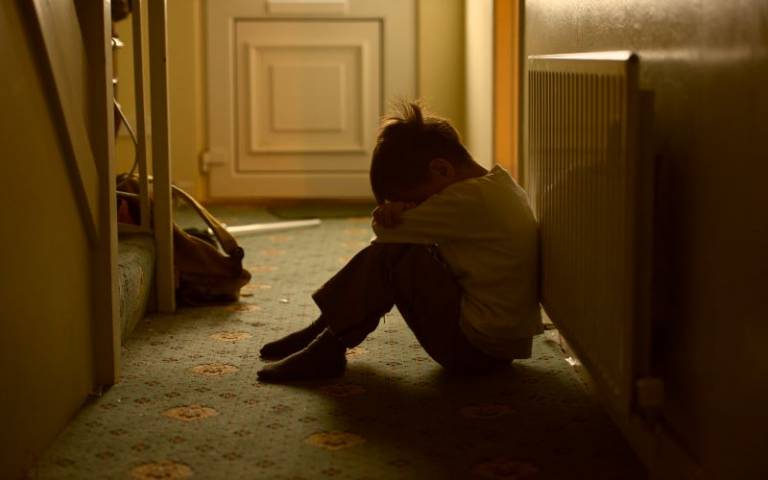Inadequate social housing affecting children’s health
30 September 2022
An inadequate level of social housing across London is affecting children’s physical and mental health, and could permanently hinder their development, according to the latest Marmot Review from the UCL Institute of Health Equity (IHE).

The report, a rapid evidence review of interventions to address housing and health issues in the capital, highlights that there are over 75,000 children under 18 who are homeless and living in temporary accommodation in London. That’s because of the severe shortage of good quality and affordable housing in London, particularly social housing, which forces many people to live in unsafe, insecure or unaffordable homes.
Professor Sir Michael Marmot, Director, UCL Institute of Health Equity, said: “This is an unacceptable state-of-affairs as it blights children’s future permanently. Our homes provide the living environment that dictates our future health. We know that living in cold, damp and mouldy homes leads to lung damage in children and impairs their development.
“Children are less likely to be able to do their homework if their home is cold and overcrowded, leading to them falling behind at school. In the long term that is more likely to lead to low-income, unstable work and not being able to make ends meet. Educational achievement is a key predictor of long-term health and longevity, and health inequalities.”
The latest Marmot review, produced for the Greater London Authority (GLA), is calling on the government to accelerate, rapidly, the increase in the supply of good quality social housing, which offers long-term security at an affordable cost. The series of recommendations includes ensuring no household with children is placed in single-room or bed and breakfast accommodation, with a goal that no children are placed in temporary accommodation for more than a specific and limited period of time.
The Mayor of London, Sadiq Khan, said: “I welcome the findings of this important report, which highlights how more government investment in social housing is vital to improving health and addressing health inequalities.
“It is unacceptable that a child’s background and postcode has such a major impact on their overall health. London has the potential to become one of the world’s healthiest major cities but if we are to achieve this ambition, we must start by reducing some of the massive inequalities that exist in the capital.
“Since I became Mayor, we have delivered record-breaking affordable homebuilding. This includes starting work on more new council homes last year than at any time since the 1970s. But the government must now help us to do even more by rapidly increasing investment in good quality social housing that meets the scale of demand in our city.”
Why London is hit the hardest
The past decade has seen major events affecting Londoners’ experiences of their homes. These include the COVID-19 pandemic, which brought about significant changes in lifestyles and housing requirements, and highlighted overcrowding. The Grenfell tower tragedy also exposed a previously hidden phenomenon of unsafe cladding and building materials, whilst the war in Ukraine and cost-of-living crisis now risk driving many more households into fuel poverty and making it more difficult for tenants to cover their rent.
People from minority ethnic backgrounds on average experience worse housing conditions and greater housing insecurity and need than White Londoners.
Housing impacts health through three established pathways: quality, security and affordability. Underlying all three however, there are fundamental challenges related to the shortage of good quality and affordable housing in London.
Sir Michael said: “Until there is a major step-change in levels of investment in social housing many people living in the Capital will remain at risk of sub-standard and insecure accommodation. The situation will only change if there is a move towards valuing our homes as a vital infrastructure for public health and wellbeing.”
In the post-war years good quality homes were understood to be an essential need for the health and wellbeing of the population, and public investment was prioritised despite high national debt. In the 1970s, local authorities in London alone were building over 20,000 new homes every year. Since the first sale of council homes through the Right to Buy scheme in the 1980s, only one in five of the homes sold have been replaced with council housing.
Sir Michael added: “As London enters a period of the highest inflation seen in a generation there is a real risk of widening housing-related health inequalities: this includes a particular risk of growing rates of fuel poverty, higher costs of maintenance and repairs, and greater risk of arrears and eviction leading to rising homelessness, especially for people living in the private rental sector.”
In addition, neighbourhoods and the surrounding environment play a critical role in people’s experiences of home and in how they interact with the surrounding area. It can affect how much time people spend in their homes and how they use their homes if safe and appealing outside spaces or local destinations do not exist. For example, children may spend more time indoors rather than playing outside, with implications for physical activity, social development and mental health.
Links
- Professor Sir Michael Marmot's academic profile
- UCL Institute of Health Equity
- UCL Population Health Sciences
Image
- Credit: fiorigianluigi on iStock
Media contact
Poppy Danby
E: p.danby [at] ucl.ac.uk
 Close
Close

